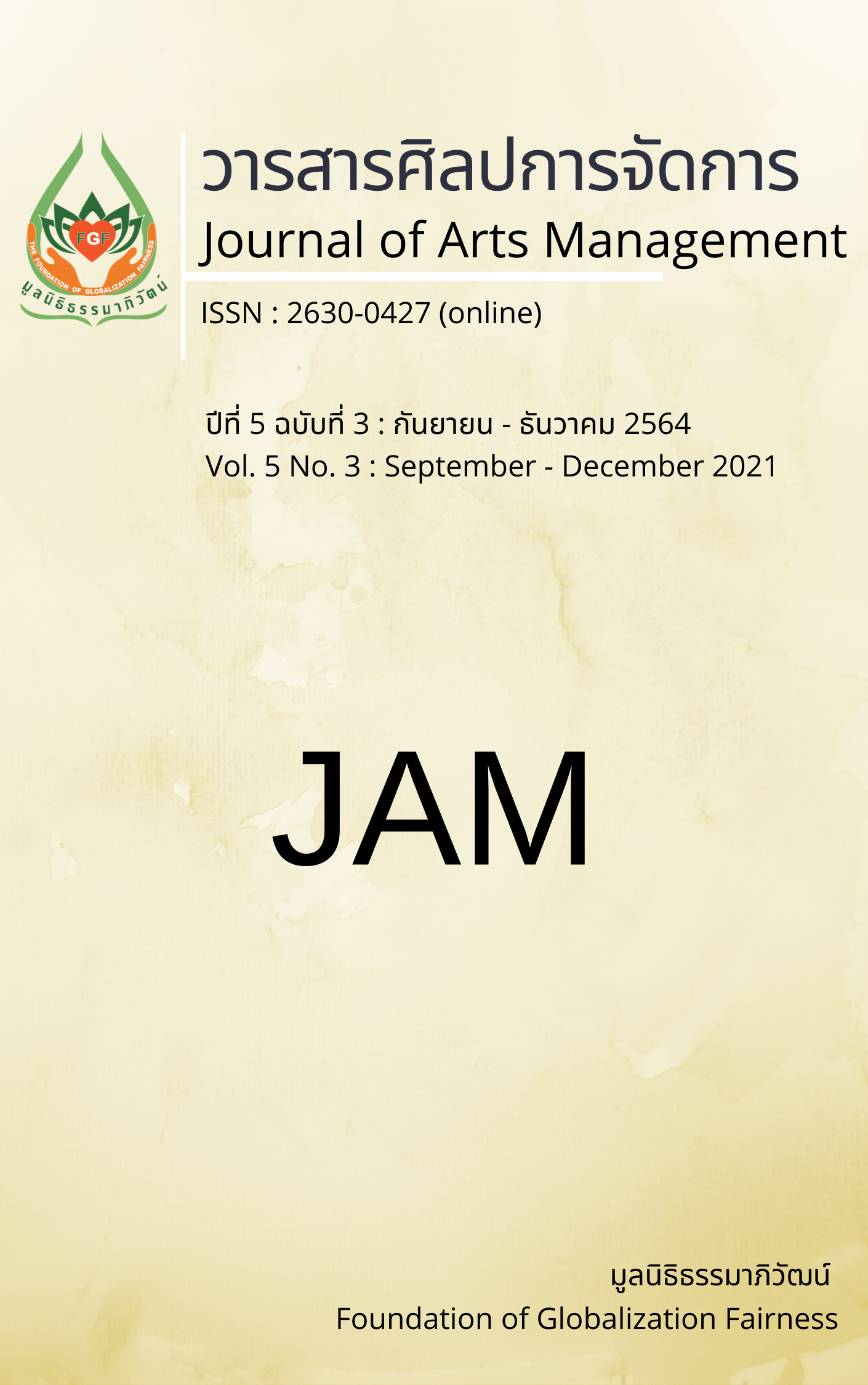Development Gel Product Containing Herbal Compress Extract with Antioxidant Activity
Main Article Content
Abstract
The purposes of this research were as follows: (1) to study the antioxidant activity knowledge of the herbal; (2) to develop a gel formulation containing herbal compress extract; and (3) to study the physical properties and stability of the formula gel. This research was a research and development. The instrument for collecting data on herbs, the antioxidant activity by DPPH assay, the development of extracts from three gels, and the assessment of physical properties and stability. Data were analyzed using descriptive statistics and content analysis.
The research results were found as follows: 1) The data base and antioxidant activity test by DPPH assay of 10 types of herbal compress extracts, curcuma longa linn, zingiber cassumunar roxb, centella asiatica (Linn.) urban, curcuma aromatica salisb, daucus carota lin, glycyrrhiza glabra, pueraria candollei graham ex benth. var mirifica, hesperethusa crenulata (Roxb.) roem, phyllanthus emblica linn, and naringi crenulata (Roxb.) Nicolson, of which had antioxidant activity.
2) Development of extracts from three gel formulations, including physical evaluation. Use herbal compress extract 5.00 grams. The appearance of the gel has the following components. The texture of the gel is clear, light yellow, not pungent smell, medium viscosity, not sticky, absorbs quickly, and has a PH value of 5.
3) Evaluation of physical properties and stability under accelerated conditions, tested all 6 cycles, stable.
Article Details
Views and opinions appearing in articles in the Journal of Arts of Management It is the responsibility of the author of the article. and does not constitute the view and responsibility of the editorial team I agree that the article is copyright of the Arts and Management Journal.
References
Boonmag, S., Srikaew, P., Sae-ngo, S., Bunpean, A., & Choedchutirakul, W. (2020). The development of herbal compress ball, stone spa for Thai traditional medicine providers, Luang Pho Pern hospital, Nakhon Pathom province. Journal of Arts Management, 4(3), 807-817.
Buachoon, N., & Manjit, W. (2018). Quantitation of total Phenolic antioxidant activity and development of skin care lotion. VRU Research and Development Journal Science and Technology, 13(2), 86-97.
Changtam, C. (2015). Usefulness and various biological activities of Curcuma longa L. Huachiew Chalermprakiet Science and Technology Journal, 1(2), 94-109.
Chattopadhyay, K., & Chattopadhyay, B. D. (2008). Effect of nicotine on lipid profile, peroxidation & antioxidant enzymes in female rats with restricted dietary protein. Journal of research and education in Indian medicine, 127(6), 571-576.
Duangjit, S., Suwannarat, K., Kittiphinitnunta, K., & Ongwisut, P. (2019). Role of natural antioxidants for topical applications: Properties, efficacy, safety and novel delivery systems. Isan Journal of Pharmaceutical Sciences, 15(1), 21-48.
Foundation for the Rehabilitation and Promotion of Traditional Thai Medicine and Ayurveda Thamrong School Applied Thai Traditional Medicine. (2007). Original Thai medical textbook. Faculty of Medicine, Siriraj Hospital.
Halliwell, B. (2009). The wanderings of a free radical. Free Radical Biology and Medicine, 46(5), 531-542. https://doi.org/10.1016/j.freeradbiomed.2008.11.008
Healing Arts Practices Act, B.E. 2542(1999). (1999, May 18). Government Gazette. Vol. 116, Part 36a, pp. 28-48.
Institute of Thai Traditional Medicine Department of Thai Traditional Medicine and Alternative Medical. (2009). People's Guide to Health Care with Thai traditional Medicine (3rd ed.). Office of the Veterans Organization under the Royal Patronage of His Majesty the King.
Ketsawatsakul, U. (2017). The effects of Alpinia galanga and Curcuma aromatica extracts containing antioxidant phenolics on cellular melanogenesis induced by UV radiation. The Thailand Research Fund. https://madlab.cpe.ku.ac.th/ThailandResearch/?itemID=352334
Khamanee, T. (1997). Research Schemes and Tools. Chulalongkorn University.
Khunlat, P, Tanthulvess, Y, Supasiri, T., & Chatthong, W. (2008). Tyrosinase inhibitory activity of curcuminoids from powder of turmeric (Curcuma longa Linn.). Srinakharinwirot Science Journal, 24, 125-139.
Leaokittikul, D. (2010). Formulation of cream containing extract from Centella Asiatica. Srinakharinwirot University Journal of Science and Technology, 2(4), 39-53.
Nakabeppu, Y., Kunihiko, S., Sakamoto, K., Tsuchimoto, D., Tsuzuki, T., & Nakatsu, Y. (2006). Mutagenesis and carcinogenesis caused by the oxidation of nucleic acids. Biological chemistry, 387(4), 373-379. https://doi.org/10.1515/BC.2006.050
Prachachat online. (2021). domestic economy “Herbs” products of the rising star of Thailand Popularity of consumption, health protection, support for exports. Prachachat online. https://www.prachachat.net/economy/news-717361
Prajuabjinda, O., Sakpakdeejaroen, I., Thongdeeying, P., & Panthong. S. (2020). Traditional Thai medicinal herbs used in primary health care to treat skin allergies and inflammation caused by insect bites. Journal of Thai Traditional and Alternative Medicine, 18(3), 604-615.
Pingwong, B., & Chanraeng, T. (2016). An Integration of Thai traditional medicine with health care according to Buddhism guidelines: A Case study of health promoting temple in the Northern region. Journal of Graduate Research, 7(2), 195-206.
Rakwathin, J. et al. (1997). Approach for light stability testing of drugs. Bangkok.
Sornlum, P. (2012). An article disseminating knowledge to the public on the topic of beautiful faces, Tanakha of Myanmar or Thai Kratie. Faculty of Pharmacy, Mahidol University. https://pharmacy.mahidol.ac.th/th/knowledge/article/122
Srithupthai. K., Hongsuwan. N., Phoomchaichot. A., & Phromdi, P. (2015). Herbal formulas developed to reduce maternal postpartum breast engorgement. SNRU Journal of Science and Technology, 7(2), 33-39.


